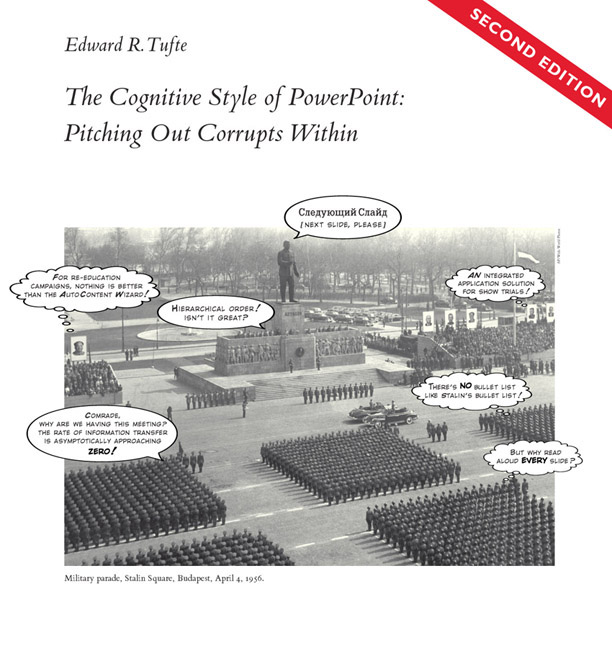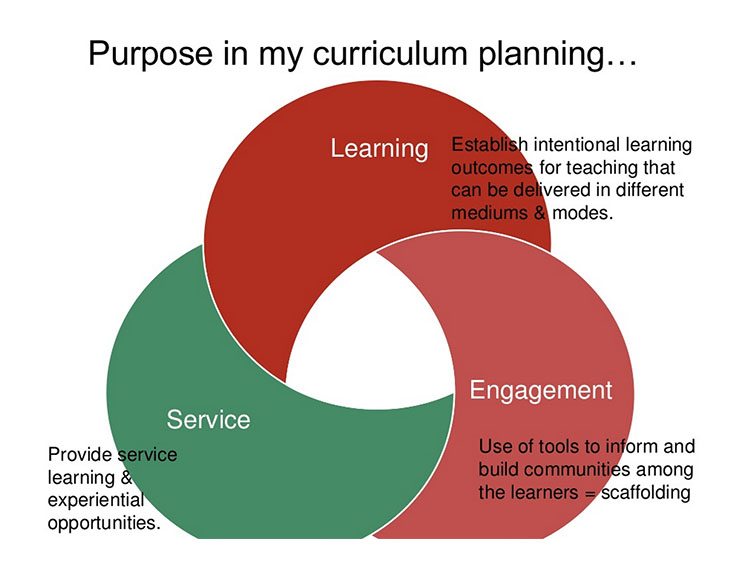digital citizenship bibliography
From MyFunCity to government-structured approach to “digital citizenship,” this is recent trend, which is seriously considered by educators as a must in the curricula. While habitually connected with technology classes, it is a much larger issue, which requires faculty attention across disciplines; it encompass digital and technology literacy, netiquette and online behavior (cyberbulling most frequently addressed), as well qualities and skills to be a functional and mindful citizen of a global world.
here is some general literature on digital citizenship:
http://groups.lis.illinois.edu/guest_lectures/cii/digcitizen.pdf
Techné: Research in Philosophy and Technology
Volume 9, Issue 1, Fall 2005. Education and Citizenship in the Digital Age
Isman, A., & Canan Gungoren, O. (2014). Digital Citizenship. Turkish Online Journal Of Educational Technology – TOJET, 13(1), 73-77. http://eric.ed.gov/?id=EJ1018088
PR, N. (2014, April 3). MyFunCity is a revolution in digital citizenship. PR Newswire US. http://login.libproxy.stcloudstate.edu/login?qurl=http%3a%2f%2fsearch.ebscohost.com%2flogin.aspx%3fdirect%3dtrue%26db%3dkeh%26AN%3d201404031549PR.NEWS.USPR.BR98059%26site%3dehost-live%26scope%3dsite
Communication Studies:
Couldry, N., Stephansen, H., Fotopoulou, A., MacDonald, R., Clark, W., & Dickens, L. (2014). Digital citizenship? Narrative exchange and the changing terms of civic culture. Citizenship Studies, 18(6/7), 615-629. doi:10.1080/13621025.2013.865903
http://login.libproxy.stcloudstate.edu/login?qurl=http%3a%2f%2fsearch.ebscohost.com%2flogin.aspx%3fdirect%3dtrue%26db%3dkeh%26AN%3d98053478%26site%3dehost-live%26scope%3dsite (please ask for copy of the article)
==================
Human Relations and Multicultural Education (HURL):
Child and Family Studies (CFS)
Lenhart, A., Madden, M., Smith, A., Purcell, K., Zickuhr, K., Rainie, L., & Pew Internet & American Life, P. (2011). Teens, Kindness and Cruelty on Social Network Sites: How American Teens Navigate the New World of “Digital Citizenship”. Pew Internet & American Life Project, http://eric.ed.gov/?id=ED537516
ORTH, D., & CHEN, E. (2013). The Strategy FOR DIGITAL CITIZENSHIP. Independent School, 72(4), 56-63. http://login.libproxy.stcloudstate.edu/login?qurl=http%3a%2f%2fsearch.ebscohost.com%2flogin.aspx%3fdirect%3dtrue%26db%3dkeh%26AN%3d87618786%26site%3dehost-live%26scope%3dsite
Ives, E. A. (2012, October 1). iGeneration: The Social Cognitive Effects of Digital Technology on Teenagers. Online Submission, http://eric.ed.gov/?id=ED543278
Monterosa, V. (2015). DEVELOPING DIGITAL CITIZENS. Leadership, 44(3), 30-32. http://login.libproxy.stcloudstate.edu/login?qurl=http%3a%2f%2fsearch.ebscohost.com%2flogin.aspx%3fdirect%3dtrue%26db%3dkeh%26AN%3d109111583%26site%3dehost-live%26scope%3dsite
10 Free Interactive Lessons about Digital Citizenship. (2012). Curriculum Review, 52(1), 4-5. http://login.libproxy.stcloudstate.edu/login?qurl=http%3a%2f%2fsearch.ebscohost.com%2flogin.aspx%3fdirect%3dtrue%26db%3dkeh%26AN%3d79851664%26site%3dehost-live%26scope%3dsite
Graham, G. (2013, November 20). Pupils are now ‘digital citizens’ with the right to use a mobile. Daily Mail. p. 3. http://login.libproxy.stcloudstate.edu/login?qurl=http%3a%2f%2fsearch.ebscohost.com%2flogin.aspx%3fdirect%3dtrue%26db%3dkeh%26AN%3d92031070%26site%3dehost-live%26scope%3dsite
LifeLock, I. (0009, January). Free Online Tool Empowers Families to Set Technology Ground Rules as More Kids Go Digital. Business Wire (English). http://login.libproxy.stcloudstate.edu/login?qurl=http%3a%2f%2fsearch.ebscohost.com%2flogin.aspx%3fdirect%3dtrue%26db%3dkeh%26AN%3dbizwire.c63848252%26site%3dehost-live%26scope%3dsite
============================
Teacher Development (ED/TDEV)
Dettori, G. (2012). Digital citizenship in schools – By Ribble Mike. British Journal Of Educational Technology, 43(6), E179. doi:10.1111/j.1467-8535.2012.01378_9.x http://login.libproxy.stcloudstate.edu/login?qurl=http%3a%2f%2fsearch.ebscohost.com%2flogin.aspx%3fdirect%3dtrue%26db%3daph%26AN%3d82468985%26site%3dehost-live%26scope%3dsite
Ribble, M. (2012). Digital Citizenship for Educational Change. Kappa Delta Pi Record, 48(4), 148-151. http://login.libproxy.stcloudstate.edu/login?qurl=http%3a%2f%2fsearch.ebscohost.com%2flogin.aspx%3fdirect%3dtrue%26db%3deric%26AN%3dEJ993448%26site%3dehost-live%26scope%3dsite
(please ask for copy of the article)
Johnson, M. (2012). Shaping Digital Citizens: preparing students to work and play in the online world. School Libraries In Canada (17108535), 30(3), 19-22. http://login.libproxy.stcloudstate.edu/login?qurl=http%3a%2f%2fsearch.ebscohost.com%2flogin.aspx%3fdirect%3dtrue%26db%3dkeh%26AN%3d95316041%26site%3dehost-live%26scope%3dsite
Enabling digital citizenship programs within your district’s network infrastructure. (2012). District Administration, 48(9), 54-55. http://login.libproxy.stcloudstate.edu/login?qurl=http%3a%2f%2fsearch.ebscohost.com%2flogin.aspx%3fdirect%3dtrue%26db%3dkeh%26AN%3d82747791%26site%3dehost-live%26scope%3dsite
ORECH, J. (2012). HOW IT’S DONE: Incorporating Digital Citizenship Into Your Everyday Curriculum. Tech & Learning, 33(1), 16-18. http://login.libproxy.stcloudstate.edu/login?qurl=http%3a%2f%2fsearch.ebscohost.com%2flogin.aspx%3fdirect%3dtrue%26db%3dkeh%26AN%3d82590138%26site%3dehost-live%26scope%3dsite
Petrucco, C. (2013). Fostering digital literacy between schools and the local community: Using service learning and project-based learning as a conceptual framework. International Journal Of Digital Literacy And Digital Competence, 4(3), 10-18. doi:10.4018/ijdldc.2013070102 http://login.libproxy.stcloudstate.edu/login?qurl=http%3a%2f%2fsearch.ebscohost.com%2flogin.aspx%3fdirect%3dtrue%26db%3dpsyh%26AN%3d2014-29004-002%26site%3dehost-live%26scope%3dsite
======================
Educational Leadership and Higher Education (ELHE)
Acosta, D. M. (2014). Tweet Up? Examining Twitter’s Impact on Social Capital and?Digital Citizenship in Higher Education. About Campus, 18(6), 10-17. http://login.libproxy.stcloudstate.edu/login?qurl=http%3a%2f%2fsearch.ebscohost.com%2flogin.aspx%3fdirect%3dtrue%26db%3deric%26AN%3dEJ1027263%26site%3dehost-live%26scope%3dsite
Suppo, C. A. (2013, January 1). Digital Citizenship Instruction in Pennsylvania Public Schools: School Leaders Expressed Beliefs and Current Practices. ProQuest LLC, http://login.libproxy.stcloudstate.edu/login?qurl=http%3a%2f%2fsearch.ebscohost.com%2flogin.aspx%3fdirect%3dtrue%26db%3deric%26AN%3dED553014%26site%3dehost-live%26scope%3dsite (please ask for copy of the article)
Noonoo, S. (2014). Digital Citizenship for the Real World. T H E Journal, 41(4), 17-19. http://login.libproxy.stcloudstate.edu/login?qurl=http%3a%2f%2fsearch.ebscohost.com%2flogin.aspx%3fdirect%3dtrue%26db%3dkeh%26AN%3d103335802%26site%3dehost-live%26scope%3dsite
Ribble, M. (2014). The importance of digital citizenship. District Administration, 50(11), 88. http://login.libproxy.stcloudstate.edu/login?qurl=http%3a%2f%2fsearch.ebscohost.com%2flogin.aspx%3fdirect%3dtrue%26db%3dkeh%26AN%3d103369941%26site%3dehost-live%26scope%3dsite
MURLEY, S. F. (2014). Engaging With a Digital Citizenry. School Administrator, 71(10), 30-31 http://login.libproxy.stcloudstate.edu/login?qurl=http%3a%2f%2fsearch.ebscohost.com%2flogin.aspx%3fdirect%3dtrue%26db%3dtfh%26AN%3d102610780%26site%3dehost-live%26scope%3dsite
Ahlquist, J. (2014). Trending Now: Digital Leadership Education Using Social Media and the Social Change Model. Journal Of Leadership Studies, 8(2), 57-60. doi:10.1002/jls.21332 http://login.libproxy.stcloudstate.edu/login?qurl=http%3a%2f%2fsearch.ebscohost.com%2flogin.aspx%3fdirect%3dtrue%26db%3dbuh%26AN%3d99008045%26site%3dehost-live%26scope%3dsite
Neustar, I. (0001, September). Neustar Launches Social Media Digital Citizenship Program for Kentucky Schools. Business Wire (English). http://login.libproxy.stcloudstate.edu/login?qurl=http%3a%2f%2fsearch.ebscohost.com%2flogin.aspx%3fdirect%3dtrue%26db%3dbwh%26AN%3dbizwire.c38975001%26site%3dehost-live%26scope%3dsite
===============
Special Education (SPED)
Farmer, L. (2012). Digital Citizenship for Youth with Autism Spectrum Disorders. CSLA Journal, 35(2), 12-13. http://login.libproxy.stcloudstate.edu/login?qurl=http%3a%2f%2fsearch.ebscohost.com%2flogin.aspx%3fdirect%3dtrue%26db%3dkeh%26AN%3d91822779%26site%3dehost-live%26scope%3dsite
Common Sense Media. (2011). Common Sense Media Partners with Nickelodeon’s the Big Help on Digital Citizenship and Anti-Bullying Campaign. Business Wire (English). http://login.libproxy.stcloudstate.edu/login?qurl=http%3a%2f%2fsearch.ebscohost.com%2flogin.aspx%3fdirect%3dtrue%26db%3dbwh%26AN%3dbizwire.c32997597%26site%3dehost-live%26scope%3dsite
===================
Sociology:
Lyons, R. (2012, January 1). Investigating Student Gender and Grade Level Differences in Digital Citizenship Behavior. ProQuest LLC, http://login.libproxy.stcloudstate.edu/login?qurl=http%3a%2f%2fsearch.ebscohost.com%2flogin.aspx%3fdirect%3dtrue%26db%3deric%26AN%3dED546058%26site%3dehost-live%26scope%3dsite (please ask for copy of the article)
NOONAN, K. (2013). DIGITAL CITIZENS RISE TO DISASTERS. Government News, 33(1), 16. http://login.libproxy.stcloudstate.edu/login?qurl=http%3a%2f%2fsearch.ebscohost.com%2flogin.aspx%3fdirect%3dtrue%26db%3dbuh%26AN%3d86153161%26site%3dehost-live%26scope%3dsite
Buente, W. (2012). Modeling citizenship offline and online: Internet use, information, and political action during the 2008 election campaign. Dissertation Abstracts International Section A, 73, 1222. http://login.libproxy.stcloudstate.edu/login?qurl=http%3a%2f%2fsearch.ebscohost.com%2flogin.aspx%3fdirect%3dtrue%26db%3dpsyh%26AN%3d2012-99190-595%26site%3dehost-live%26scope%3dsite
Kurubacak, G. (2011). eLearning for Pluralism: The Culture of eLearning in Building a Knowledge Society. International Journal On E-Learning, 10(2), 145-167. http://login.libproxy.stcloudstate.edu/login?qurl=http%3a%2f%2fsearch.ebscohost.com%2flogin.aspx%3fdirect%3dtrue%26db%3deric%26AN%3dEJ926545%26site%3dehost-live%26scope%3dsite
Hill, A. M. (2015). The kids are all right online: Teen girls’ experiences with self-presentation, impression management & aggression on Facebook. Dissertation Abstracts International Section A, 76, http://login.libproxy.stcloudstate.edu/login?qurl=http%3a%2f%2fsearch.ebscohost.com%2flogin.aspx%3fdirect%3dtrue%26db%3dpsyh%26AN%3d2015-99170-479%26site%3dehost-live%26scope%3dsite
===============================
Criminal Justice
NPR. (2015, April 13). National Cyber Security Alliance Aligns with RSA Conference to Empower Digital Citizens to Stay Current in the Ever-changing Cybersecurity Environment. PR Newswire US. http://login.libproxy.stcloudstate.edu/login?qurl=http%3a%2f%2fsearch.ebscohost.com%2flogin.aspx%3fdirect%3dtrue%26db%3dkeh%26AN%3d201504131030PR.NEWS.USPR.DC78336%26site%3dehost-live%26scope%3dsite
NPR. (2014, February 11). Digital Citizens Alliance Calls Prosecution of Apps Content Thieves Important Step to Protect Internet. PR Newswire US. http://login.libproxy.stcloudstate.edu/login?qurl=http%3a%2f%2fsearch.ebscohost.com%2flogin.aspx%3fdirect%3dtrue%26db%3dbwh%26AN%3d201402111145PR.NEWS.USPR.DC63074%26site%3dehost-live%26scope%3dsite
NPR. (2015, May 18). Public Officials, Business Leaders and Cybersecurity Experts Gather at “Two Steps Ahead: Protect Your Digital Life” Event in Brooklyn. PR Newswire US. http://login.libproxy.stcloudstate.edu/login?qurl=http%3a%2f%2fsearch.ebscohost.com%2flogin.aspx%3fdirect%3dtrue%26db%3dkeh%26AN%3d201505180600PR.NEWS.USPR.DC10064%26site%3dehost-live%26scope%3dsite
====================
Political Science
NOONAN, K. (2013). DIGITAL CITIZENS RISE TO DISASTERS. Government News, 33(1), 16. http://login.libproxy.stcloudstate.edu/login?qurl=http%3a%2f%2fsearch.ebscohost.com%2flogin.aspx%3fdirect%3dtrue%26db%3dbuh%26AN%3d86153161%26site%3dehost-live%26scope%3dsite
Buente, W. (2012). Modeling citizenship offline and online: Internet use, information, and political action during the 2008 election campaign. Dissertation Abstracts International Section A, 73, 1222. http://login.libproxy.stcloudstate.edu/login?qurl=http%3a%2f%2fsearch.ebscohost.com%2flogin.aspx%3fdirect%3dtrue%26db%3dpsyh%26AN%3d2012-99190-595%26site%3dehost-live%26scope%3dsite
Kurubacak, G. (2011). eLearning for Pluralism: The Culture of eLearning in Building a Knowledge Society. International Journal On E-Learning, 10(2), 145-167. http://login.libproxy.stcloudstate.edu/login?qurl=http%3a%2f%2fsearch.ebscohost.com%2flogin.aspx%3fdirect%3dtrue%26db%3deric%26AN%3dEJ926545%26site%3dehost-live%26scope%3dsite
Education Commission of the State. (2012, September). Education Commission of the States Releases Brief on Civic Engagement and Digital Citizenship. Business Wire (English). http://login.libproxy.stcloudstate.edu/login?qurl=http%3a%2f%2fsearch.ebscohost.com%2flogin.aspx%3fdirect%3dtrue%26db%3dbwh%26AN%3dbizwire.c39665781%26site%3dehost-live%26scope%3dsite
NPR. (2015, May 18). Public Officials, Business Leaders and Cybersecurity Experts Gather at “Two Steps Ahead: Protect Your Digital Life” Event in Brooklyn. PR Newswire US. http://login.libproxy.stcloudstate.edu/login?qurl=http%3a%2f%2fsearch.ebscohost.com%2flogin.aspx%3fdirect%3dtrue%26db%3dkeh%26AN%3d201505180600PR.NEWS.USPR.DC10064%26site%3dehost-live%26scope%3dsite
=================
Library:

